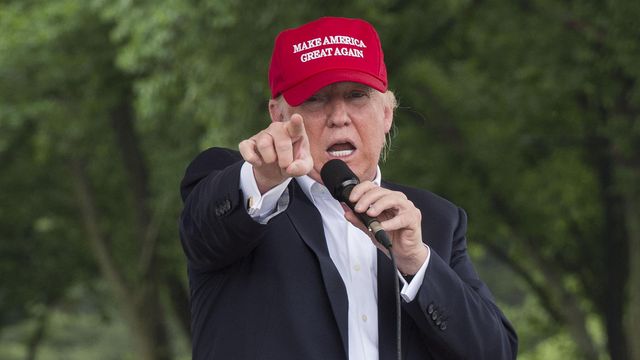Trump, Clinton Push Opposing Economic Plans: Albert R. Hunt

published Jun 26th 2016, 10:45 am, by Albert R. Hunt
(Bloomberg View) —
The contempt that Hillary Clinton and Donald Trump express for each other will continue to play out in vitriolic sound bites. But their profound differences on what to do about the economy and the struggling middle class are far more important.
“This election will be won by whichever candidate convinces middle-class voters they are better for their jobs and future prospects,” says Stephen Moore, a Heritage Foundation economist and Trump adviser.
“This is about whether economic forces hollow out the middle class or whether those forces strengthen the middle class, creating jobs and higher wages,” says Gene Sperling, a leading economic official under Presidents Bill Clinton and Barack Obama, and an adviser to Hillary Clinton.
As the economy has recovered from the economic crisis, the unemployment rate has shrunk to less than half of what it was eight years ago and wages have started to rise. But medium average family income, in real dollars, is less than it was 10 years ago.
QuickTake How the U.S. Elects Its Presidents
The two likely nominees offer radically different remedies, though there is an unusual wrinkle. Clinton goes out of her way to show that most of her initiatives are paid for. Trump, in defiance of Republican orthodoxy, seems unfazed by debt. He proudly says that borrowing fueled his business ventures and has even suggested that as president, he might try to negotiate down U.S. debt obligations.
Clinton’s agenda includes calls for a higher minimum wage, 12 weeks paid leave for a chronically ill worker or parents with a newborn, more funds for job training and education, especially higher education, and a $275 billion infrastructure plan.
She would raise taxes by $1.1 trillion over the next decade, the Tax Policy Center estimates. These increases would mainly affect wealthier Americans, and include higher capital gains taxes on assets held for longer periods; a larger estate tax for wealthy heirs, and closing some corporate loopholes and advantages enjoyed by hedge fund and private equity executives.
These increases will be offset, however, by a subsequent middle-class tax cut.
Trump, by contrast, has offered huge tax cuts, which policy experts estimate will cost between $9 trillion and $11 trillion over a decade. He also vows to end or soften many federal regulations, which he calls job killers. Look for him to focus on a pro-growth energy policy that his camp calculates would split two of Clinton’s important constituencies, labor and environmentalists.
But the core of Trump’s job-creation proposals involves getting tough on trade by renegotiating previous treaties and imposing heavy duties on imports, especially from China or Mexico. Although international laws and the need for congressional approval could inhibit such actions, a president does have flexibility to impose some trade sanctions.
In the coming months, each candidate will be pressed to provide more specifics; Trump has been especially vague.
He has delegated two advocates of supply-side tax cuts to revise his plan to make it less costly. One of them, Moore, says the objective is to cut the projected deficit by at least two-thirds, to around $3 trillion over a decade. This, he says, would be achieved primarily by limiting deductions for upper-income taxpayers.
Sperling suggests that a middle class tax cut, higher education and a larger infrastructure plan “are candidates for expansion” by Clinton.
Until more specifics are forthcoming, it’s difficult to gauge the economic impact of either candidate’s plans, though several economic analyses, including those conducted by Moody’s Analytics and the U.S. Chamber of Commerce, have estimated that Trump’s plans, primarily because they rely on protectionism, deportation of undocumented workers and debt, would throw the economy into a recession. The billionaire New Yorker rejects that contention, and argues that he would create growth of 6 percent a year, a level last achieved in 1983.
This column does not necessarily reflect the opinion of the editorial board or Bloomberg LP and its owners.







No Comment